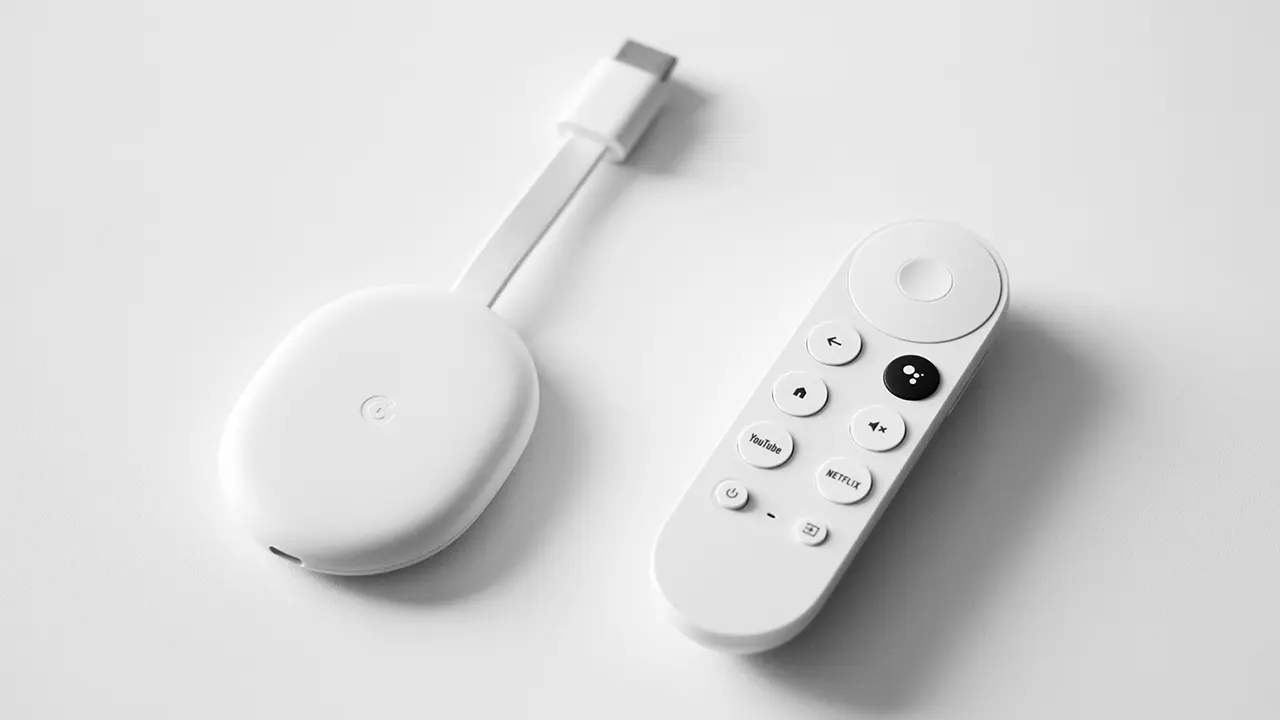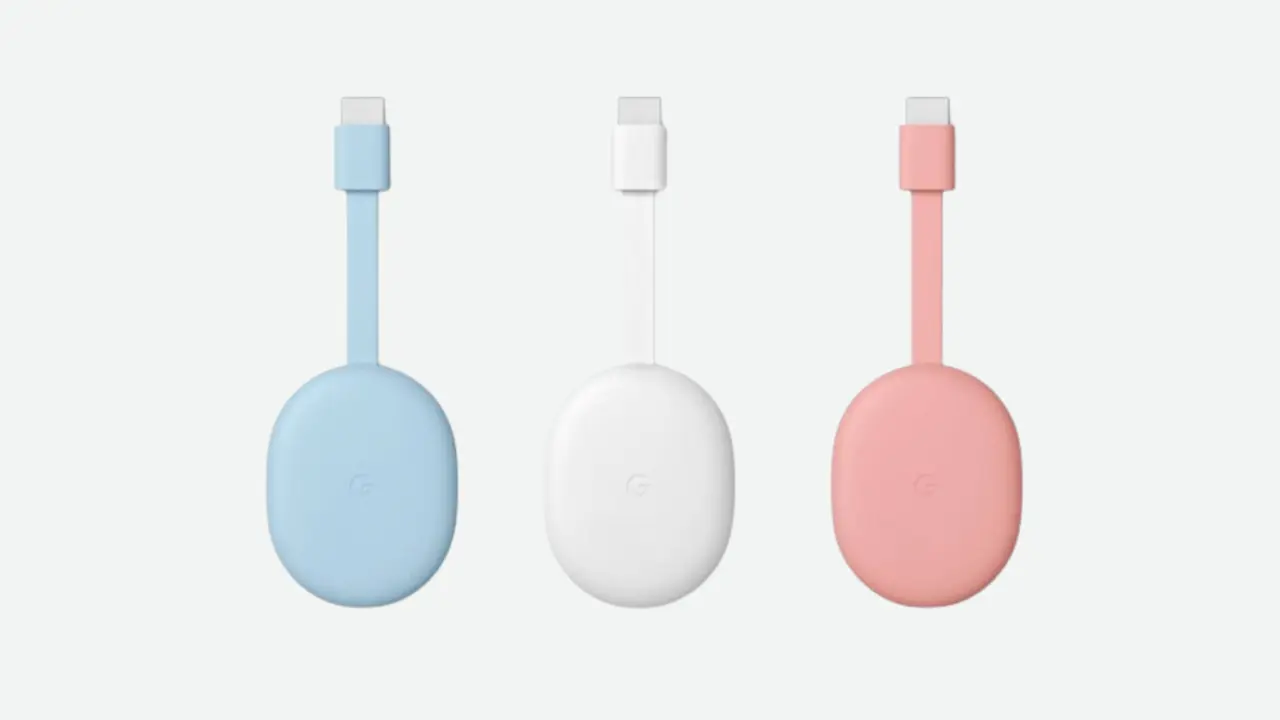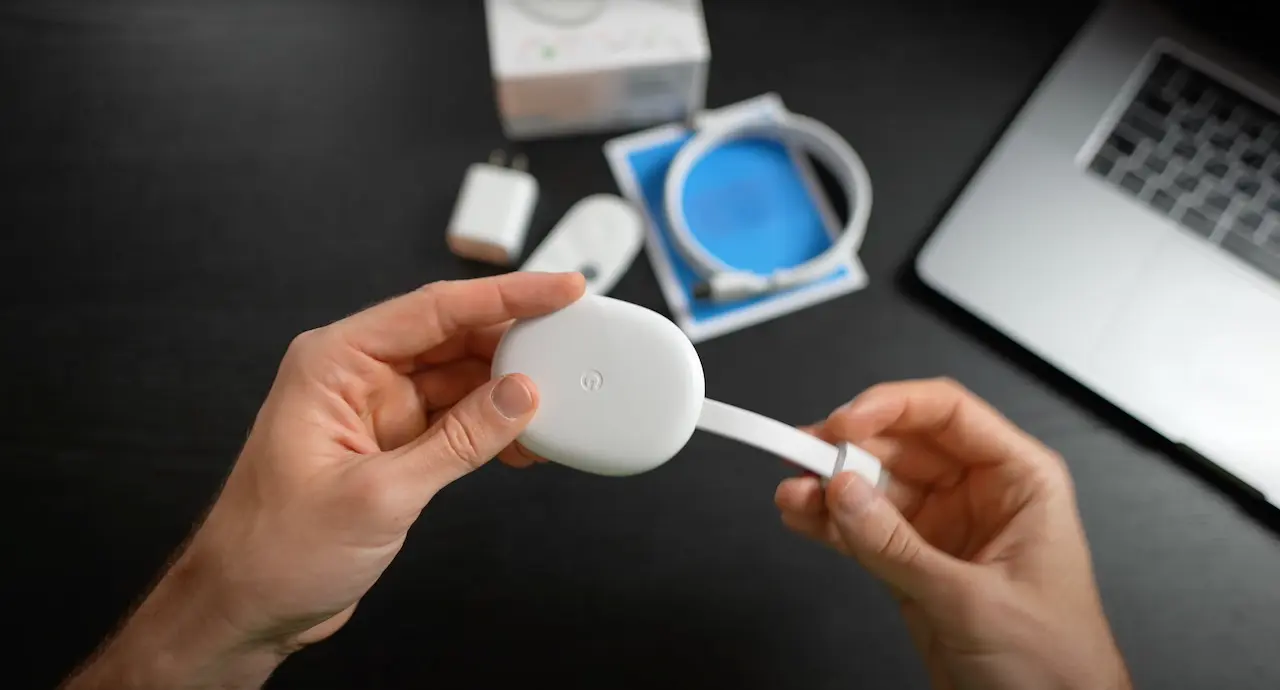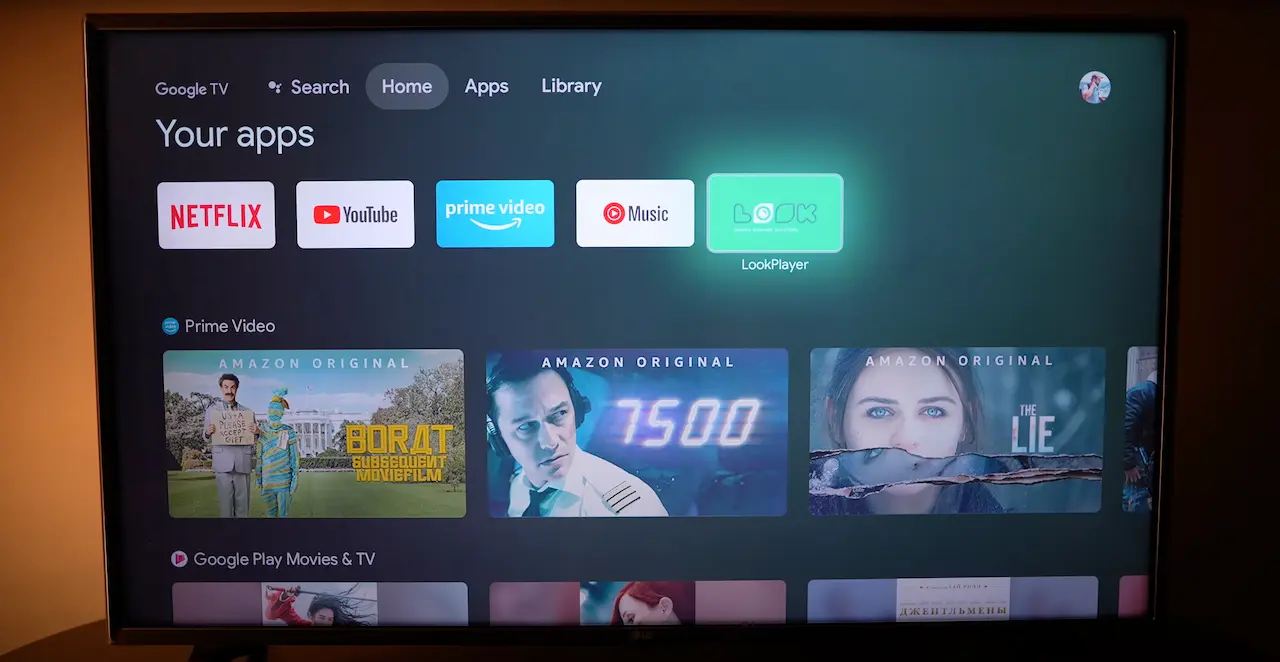
Table of Content
Did you know that Google has sold over 55 million Chromecast devices worldwide? It shouldn’t come as a surprise. Most Chromecast with Google TV users will tell you that it “meets their needs extremely well” with minimal issues with 4K streaming. For any digital signage setup, that’s the kind of device you want in your arsenal. Reliable streaming is a must-have and it seems the Chromecast with Google TV has cracked the code. So let’s get started understanding this device and why it might be the go-to choice if you’re looking to get started with digital signage.
What Is the Chromecast With Google TV?
The whole idea behind the Google Chromecast was to “cast” videos from your phone, tablet, or computer on a screen. It was cheap and easy to use and people loved it. And that’s the way it has been since 2013, using a tiny dongle with a USB cord that could be put into the back of a TV screen, until the Chromecast Ultra which was introduced in 2016.
The biggest change came in 2020 when they added a remote and new menu system called Google TV. The older Chromecast versions (without Google TV) were just casting devices, they didn’t have apps or menus. But Google TV comes with dozens of pre-installed apps that instantly turn any screen into a smart display. This means you can install the digital signage software of your choice and start managing your screens remotely.
If you have a Chromecast with Google TV, you can do both: cast your media content onto your TV or use the Google TV interface, the choice is yours.

Chromecast with Google TV Overview
Design and Build: It's small, sleek, and comes in three colors - Snow (white), Sunrise (pink), and Sky (blue), which is great for blending into your setup. But, it's made of plastic, so if your signage is in a high-traffic area, you might want to consider a protective case to prevent accidental damage.
Performance: The Amlogic S905D3G chip and 2GB of RAM make the Chromecast with Google TV a powerhouse for most digital signage needs. It's designed for 4K HDR streaming, so your content will look crisp and vibrant. And if your content has Dolby Vision or Dolby Atmos, this device can handle it, for stunning picture quality.
Memory and Storage: 8GB of internal storage is decent for most digital signage applications, especially if you're using a cloud-based content management system (CMS). However, if you plan to store a lot of media locally, you might run out of space quickly. The good news is that you can easily expand storage with a USB-C drive.
Graphics: The Mali-G31 MP2 GPU might not be the most powerful on the market, but it's more than enough for handling most digital signage content. You'll get smooth playback and sharp graphics, even with complex visuals.
Connectivity: You can connect your Chromecast with Google TV to your network either through Wi-Fi or Ethernet. Most setups rely on Wi-Fi for connectivity and it works just fine. However, if you're dealing with large media files or unreliable Wi-Fi, you might want to consider using the Ethernet adapter for a more stable and reliable connection.
.webp)
Which Chromecast with Google TV Should You Buy?
Chromecast with Google TV comes in two versions: the HD and 4K models. Both have the same capabilities, the only difference is that the HD model can only support up to 1080p, while the 4K model gives your display the ultimate viewing experience in 4K Ultra HD resolution. It also supports HDR formats like HDR10, HDR10+, and Dolby Vision.
As you might have guessed, there is a price difference. The HD model comes at $29.99 and the 4K model at $49.99.
If you have a 4K TV, then the 4K version is suitable to take full advantage of your TV's capabilities and enjoy the highest possible picture quality. If you're on a tight budget, the HD version is a good entry point into the world of Google TV.

Steps for setting up Google Chromecast
The Chromecast setup procedure is typically straightforward and intuitive, but if you get stuck, this piece should help you figure out what to do next. Here's a comprehensive guide.
Connect your Chromecast to the screen
Using the HDMI cable you can connect your Chromecast to the TV's port. If you're using a computer or mobile device to set up your Chromecast, ensure they're connected to a single Wi-Fi network.
Install the Google Home app
The Google Home app is available for download in both the Google Play Store and Apple App Store. However, it is likely preloaded on your Android device. You can also set up your Chromecast with Google TV using a computer with the Chrome browser by visiting the Chromecast setup website.
Choose device setup
Remember that a pop-up window may appear asking you to set up a new device; this is also an option.
Pick a Home to do the installation
The Chromecast will be configured through the Google Home app. Simply tapping Continue when requested is all that you should do. Then, in the bottom right, choose Chromecast and click Next. Then, when the on-screen 4-character code has been confirmed, press Yes and tap I Agree to accept the terms and conditions. Tell Google Home which room your device is in and choose whether or not Google should share your info.
Additional steps
- Connect your Chromecast with Google TV to your Wi-Fi network. You can choose to link your Google Assistant if you desire.
- To get emails on Google hardware, click the Sign Up command and Select Next.
- You can also try out the guided tour. It wouldn't hurt to let Google Home show you how to navigate, find content, and discover all the features if you’re new to Google TV or just want a refresher.
Troubleshooting Chromecast with Google TV
Wi-Fi Signal Strength: A weak or unstable Wi-Fi connection is the most common reason for buffering, lag, and content freezes. Make sure your Chromecast is as close to your Wi-Fi router as possible. In large venues, you might need Wi-Fi extenders or a mesh network for better coverage.
Network Connectivity: Your Chromecast and the device controlling it (like your smartphone or tablet) should be using the same Wi-Fi network. Sometimes people accidentally connect to the guest network, which can mess things up.
Cables and Updates: It's always worth checking that all your cables are securely connected and in good condition. Also, make sure your Chromecast is running the latest firmware and software updates.
App Troubleshooting: If you're having trouble with a specific app, try closing it completely, restarting your Chromecast, or even reinstalling the app.
Hardware Issues: In rare cases, there might be a problem with the Chromecast itself. If nothing else works, contact Google support for assistance.

Turning Chromecast with Google TV into a digital signage player using Look DS
Chromecast with Google TV isn't limited to becoming a set-top box for online video playback in the house. This device's features suit basic enterprise-level digital signage player initiatives. However, if you need remote content management, the Look DS platform perfectly fits your Chromecast.
Find the Look Digital Signage app in the Google Play store, then install and activate it so your device can work with Look. Once you get the typical six-digit code displayed on the screen after a series of authorization contracts, you should link it up with the Look CMS.
You'll need a new Look account or access to an existing one. Select "Add screen" under "Screens" and enter your 6-digit code into the pop-up box that appears. You can now use your Chromecast to benefit from the Look's powerful features.
Content Examples Possible With Digital Signage Software
Images and Videos: the Look DS does not compress your media content, and that means that you can display your slideshows and videos in 4K. If you've got the Google TV 4K version, it'll render your content beautifully, with sharp details and vibrant colors.
Web Pages: Look can display live web pages as content, such as social media feeds, news websites, or custom dashboards.
Text and Graphics: Inside of Look’s layout designer, you can customize text overlays, fonts, colors, and other graphics to match your branding.
Interactive Content: While Chromecast itself isn't inherently interactive, Look software can integrate with a touchscreen interface. This works by creating multiple layouts with buttons that, when touched, trigger the display of a different layout. For instance, you could create a main menu layout with buttons for "Products," "About Us," and "Contact." Touching each button would then display the corresponding layout with more detailed information.
Live Streams: Since Look DS comes with dozens of built-in apps, you can display live broadcasts from YouTube, Facebook, and Instagram. The Chromecast's streaming capabilities will provide smooth playback with minimal latency.

Chromecast with Google TV as Digital Signage FAQs
Can I really use the Chromecast with Google TV for my business's digital signage?
Absolutely! While it might not be the first device that comes to mind for professional digital signage, the Chromecast with Google TV is a surprisingly capable contender, especially for smaller setups or if you’re on a budget. It's a fantastic option if you're looking for an easy-to-use, affordable solution to get your message across on screens.
Is it powerful enough to handle my content?
This depends on what you're showing. For most standard digital signage content like images, videos, and web pages, the Chromecast with Google TV is more than up to the task. It even supports 4K HDR content. However, if you're planning on running super demanding applications or have an incredibly complex setup, you might want to consider a more powerful dedicated digital signage player.
How do I get my content onto the Chromecast with Google TV?
That's where Look digital signage software comes in. It lets you easily manage and schedule your content from anywhere with an internet connection. You can create your content or customize pre-designed templates. Once your content is ready, it automatically gets pushed to your Chromecast with Google TV.
What about offline playback?
While the Chromecast with Google TV primarily relies on an internet connection, Look digital signage software supports offline playback. This means your content can still play even if your internet goes down, so your message won't disappear when you need it most.
Is the Chromecast with Google TV secure enough for my business?
While the Chromecast with Google TV isn't made specifically for enterprise-level security, you can still take steps to protect your signage like using strong passwords and enabling two-factor authentication.
I'm sold! Where can I find out more?
If you want to see for yourself how easy it is to turn your Chromecast with Google TV into a powerful digital signage solution, Sign up for a 14-day free trial of Look digital signage software today and see how it works for you.










![Top 10 Easter Advertising Ideas to Drive Sales [+ Examples]](https://cdn.prod.website-files.com/5f46c318c843828732a6f8e2/65fa8697f31661d9d0bb6a01_Easter-Advertising-thumbnail.webp)



